Anniversary in Venice: A proud city awakens from lockdown
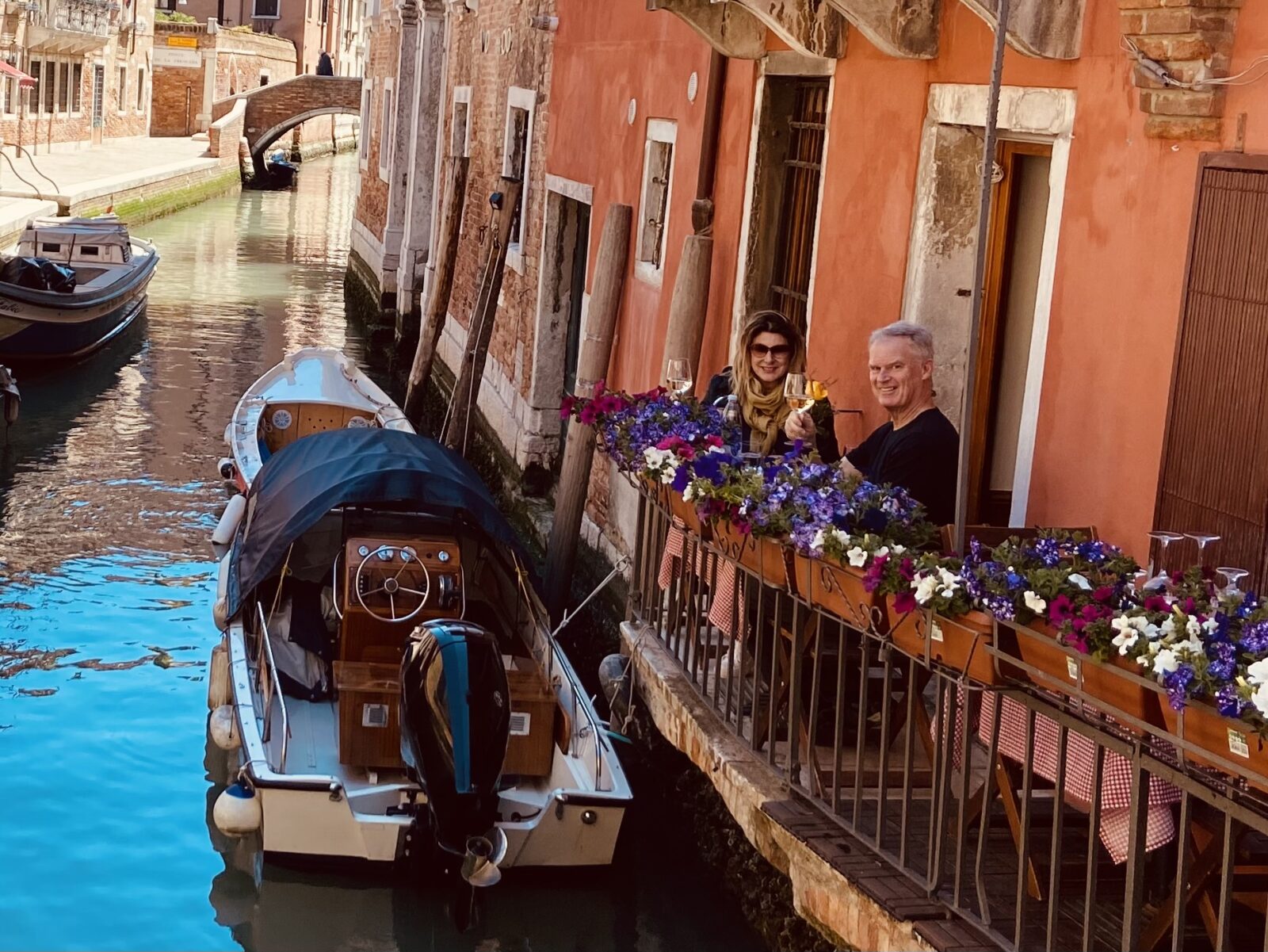
VENICE, Italy — St. Mark’s Square is bigger than a football field, and on some days it has more people than a football stadium. In my previous trips to Venice I’ve had to maneuver around school groups, souvenir carts, selfie-taking tourists, street artists, dogs, cafe barkers and the ubiquitous old lady attracting every pigeon in Italy with a bag full of bread crumbs.
St. Mark’s Square has been one of the most visited open spaces on earth since its completion in 1100 as a base for the beautiful St. Mark’s Basilica and landmark for the powerful Venetian Republic. The fall of the empire in 1797 hasn’t stopped millions from pouring in to gaze at the basilica’s mosaics, look up at the 323-foot-high brick Campanile clocktower and have a white tuxedoed waiter serve them a 3.50-euro cappuccino.
Venice averages more than 20 million tourists a year. I’ve contributed to that statistic many times.
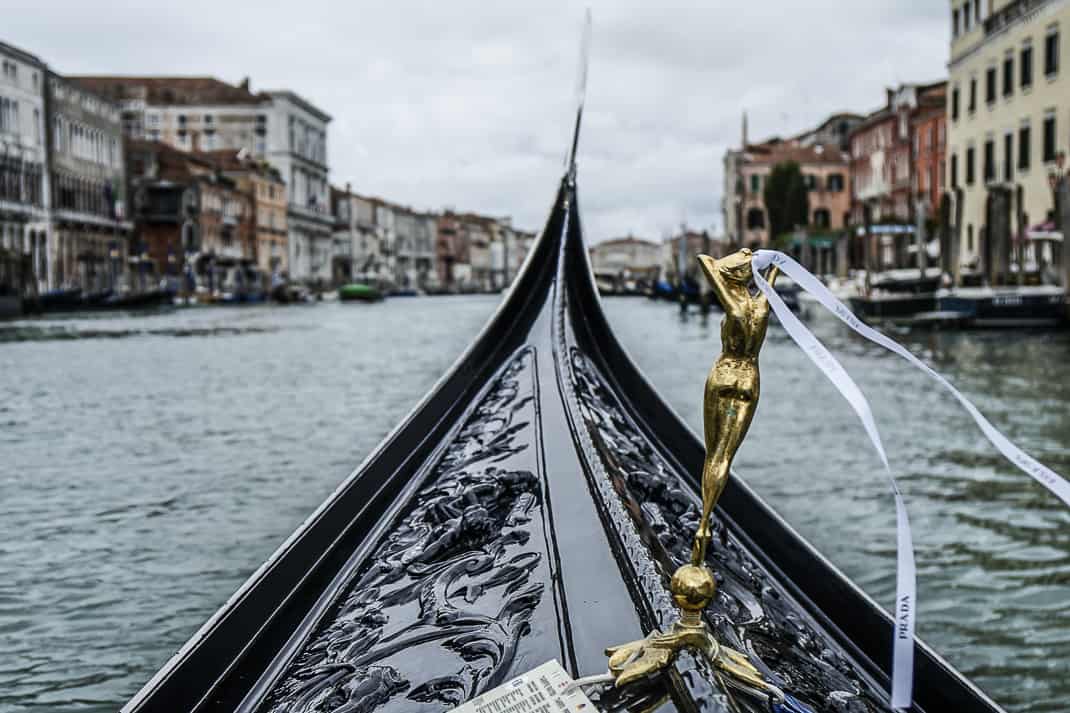
Monday in Venice
However, Monday was different. Marina and I walked into the square on a bright, sunny morning in the mid-50s. We didn’t recognize one of the most recognizable attractions in the world. We stared out at a sea of stone squares, a gaping maw of sleepy activity. A couple walked by, each with a Corgis dog. One lone souvenir cart sat, looking surprisingly awkward in the complete lack of buzz around it. A jogger ran through. I’d never seen a jogger in Venice, let alone in St. Mark’s Square. Pigeons swooped around like confused kamikaze pilots impatiently looking for breadcrumbs that were never thrown.
Venice is slowly awakening from a Covid-19 lockdown that affected it more than any city in Italy. Today Venice finds itself at one its most important crossroads in its history. How does it heal economically after losing 1 billion euros last year while slowing the over tourism that buried it in so many problems before Covid arrived 15 months ago?
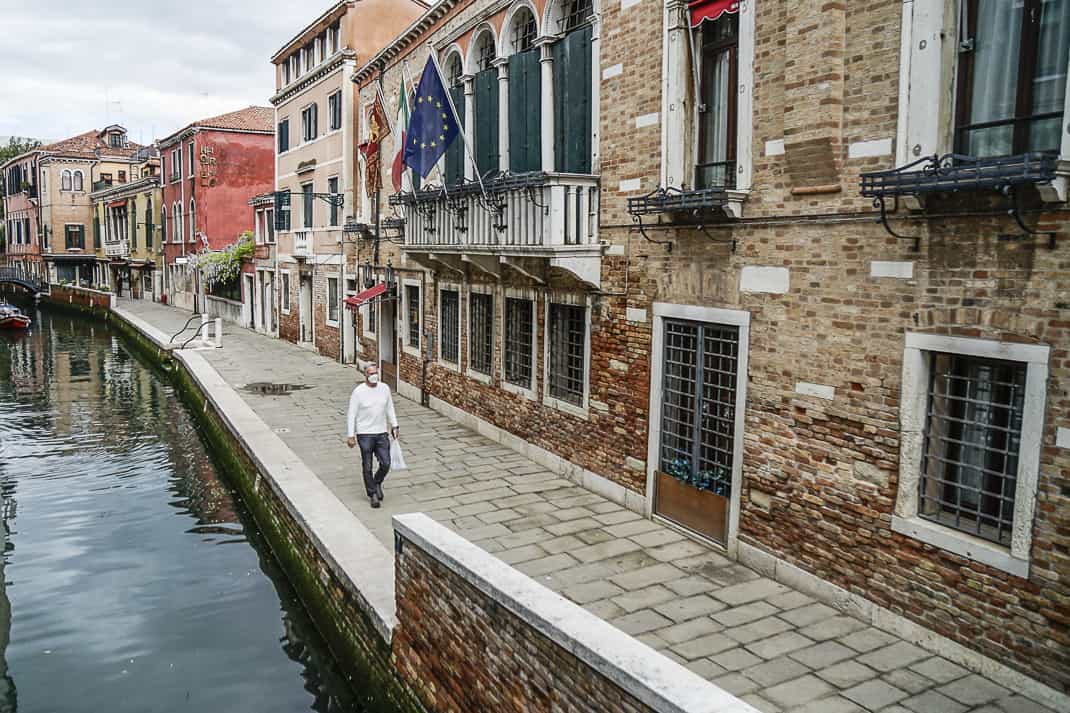
If they could package what Marina and I experienced over the weekend, Venice would return to its glory from the Venetian Republic. We celebrated our sixth anniversary in Venice and wanted to arrive as soon as possible after Italy ended its second lockdown April 26. Many day trippers from around Northern Italy came Saturday, Italy’s Labor Day, but on Sunday and Monday Marina and I felt we had to ourselves a city Henry James once called “an orange gem resting on a blue glass plate.”
The canals were so quiet we could hear water lapping up against motorboats. We were one of only two or three couples in restaurants. The quaint calli (Venetian dialect for “alleys”), once so crowded Venice considered making some one way, were nearly empty. We were two of about 10 people inside St. Mark’s. Only two other people stayed at our hotel. We even took our first gondola ride, cruising water clear enough we could see cormorants diving for fish we never thought could survive in the once murky filth.
The most romantic city in the world, once buried under cruise ships and package tourism and drunks, has its heart back.
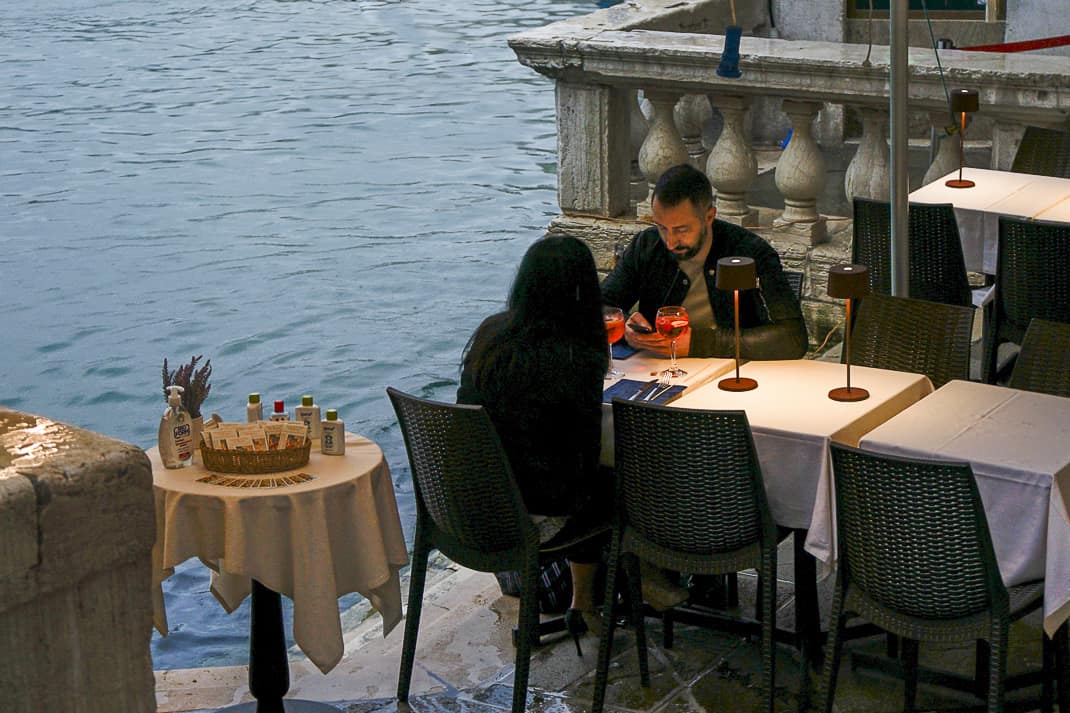
“I have to say it’s magic and incredible,” said Simone Poli, a Venetian and part of the family owned Ai Mercanti restaurant in a quiet courtyard near our hotel. “It’s a magical feeling. I don’t know how long Venice will remain this way.”
“It’s become a normal city,” said Alex Ciobano, a front desk clerk at our Antico Panada hotel and who’d been out of work since December. “Venetians have gotten nicer. They’re usually rude.”
I disagree. I have always found Venetians among the friendliest people in the friendliest country I’ve ever encountered. No matter how much the locals rely on tourism, the sheer weight of roller bags filling alleys, requests to take photos and drunks jumping in canals must eventually wear on their sweet disposition.
I’ve never seen it. Venetians are funny, light-hearted and laid back, the type you’d expect of people descending from a seafaring republic where the soothing sounds of gondola bobbing on a canal can put anyone at ease.
“We are open to everyone,” Poli said. “Our republic was open for years and years to every kind of culture. We all know each other.”

Our first meal was at Celio, a pizzeria around the corner that had outdoor seating to adhere to the Italian government’s eased lockdown concessions. The two bored but cheerful waiters chatted with us about life in the new Venice.
“This is empty,” one said waving his hand at the relatively quiet street. “This is like October.”
My thin-crust, salami piccante pizza was delicious and I wanted to know the Venetian dialect equivalent of Ammazza che bono! That’s the Roman dialect phrase for “Excellent food!” I say that to waiters and restaurant owners all over Rome. These waiters gave me their quickie Venetian lesson, through muffled laughter. After a great meal, Venetians say, Ghe sbocio che bon. The rough — very rough — translation is, “I came well.”
As I’ve said, no other country in the world equates food with sexuality like Italy.
Venice in the rain
With Venice crowds down, we wandered the alleys unimpeded. Few cities are better for strolls than Venice. Some cities have a new sight around every corner. Venice has a new canal over every bridge. It seems easy to get lost with a maze of alleys and 300 bridges over 118 tiny islands. But all you need to regain your bearings is know where is the Grand Canal, the major waterway that snakes its way through the middle of the archipelago.
The forecast for rain didn’t occur until early Saturday night. Then Venice became even more eerily quiet. Statuesque Rialto Bridge, which must get more foot traffic than Golden Gate Bridge gets cars, was empty. One lone couple had drinks at the expensive cafe below it.
We dodged the rain until we ducked into Sepa, a favorite haunt that had just reopened that day. It sells organic wine from Venice’s Veneto region, along with a big antipasti bar. I had a nice 3-euro Pinot Grigio in a plastic cup as Marina nibbled on a tuna ball while we huddled under my umbrella.
We didn’t mind the rain. Not on this weekend. Not when Venice is as undisturbed as anyone alive has ever seen it. And Venice in the rain seems to fit. Surrounded inside and out by water, Venice in a downpour turns into a watercolor. The vines climbing the centuries-old walls shiver with life. The rain pelts boat hulls like the pitter pat of little bird beaks. The lights across the canals dim into a sensual darkness only a poet can love.
Starving for business, the establishments reopened last week. We continued north into the normally lightly visited Cannaregio neighborhood to a tiny bar called Combo. I ordered Venice’s contribution to world alcohol, the Spritz (Prosecco, Aperol, soda water) and kept dry as the rain pelted the table’s umbrella over us.
About the only passerby I saw was a young man in his 20s precariously negotiating the slippery stone walkway on crutches and missing his right foot.
The ugly economics
For an idea of Venice’s economic devastation over the last year, half of Venice’s population of 51,000 are employed in tourism. In 2019 it had 12 million overnight visitors and 25 million day trippers. Those tourists brought in an average of 3 billion euros a year. Cruise ships brought in 290 million. Airbnbs had taken up so much living space, 10,000 Venetians have left town since 2004. By December, Airbnb bookings were down 74 percent and they collectively lost 70.2 million euros.
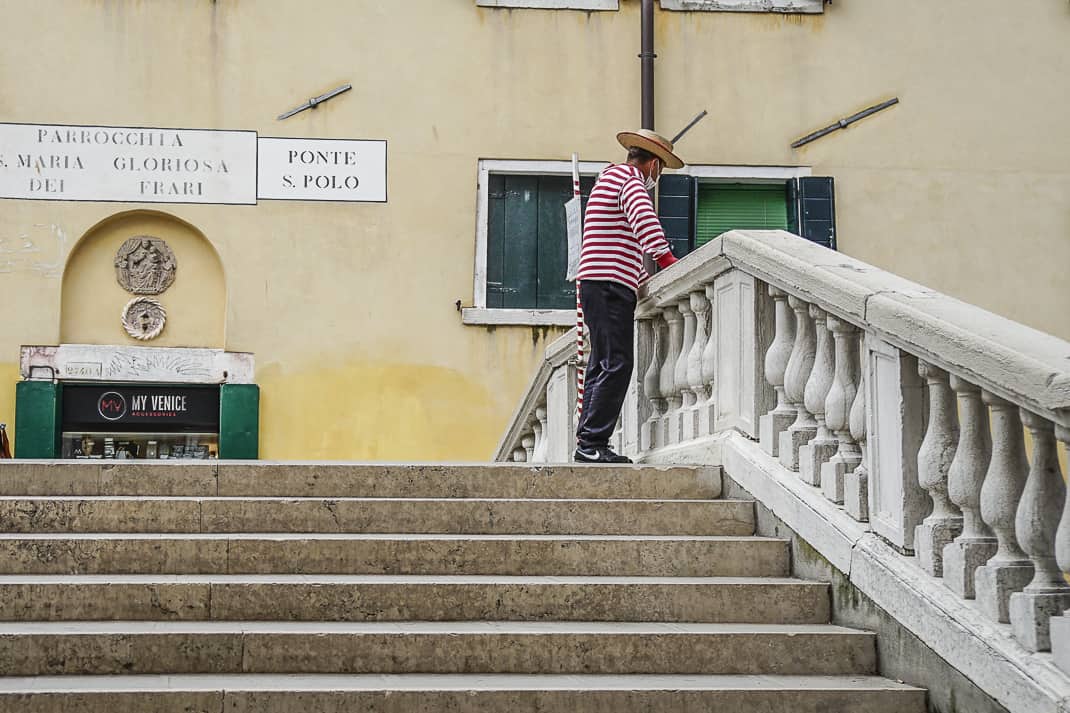
Of that 1 billion euros the city lost last year, 100 million was lost in public transportation alone.
“On some days, nobody comes,” said Paolo Vianello, a gondola pilot for 30 years, as he waited for customers near the usually packed Rialto Bridge. “I stand here six, seven hours like this and go home. Nothing.”
Even before Covid made Italy its first knockout victim on its wide swath through mankind, as I wrote three years ago, Venice was a dying city. As late as 1951, Venice had 174,800 people. When I first visited as a 22-year-old backpacker in 1978 it had 100,000. Today it has 51,000.
Visiting daily were up to 10 cruise ships, some carrying 40,000 passengers, polluting and eroding the canals. In July 2018, 2,000 Venetians took to the streets protesting the over tourism. Mayor Luigi Brugnaro talked of charging day trippers to enter the city and setting up barricades to direct people to less visited sites.
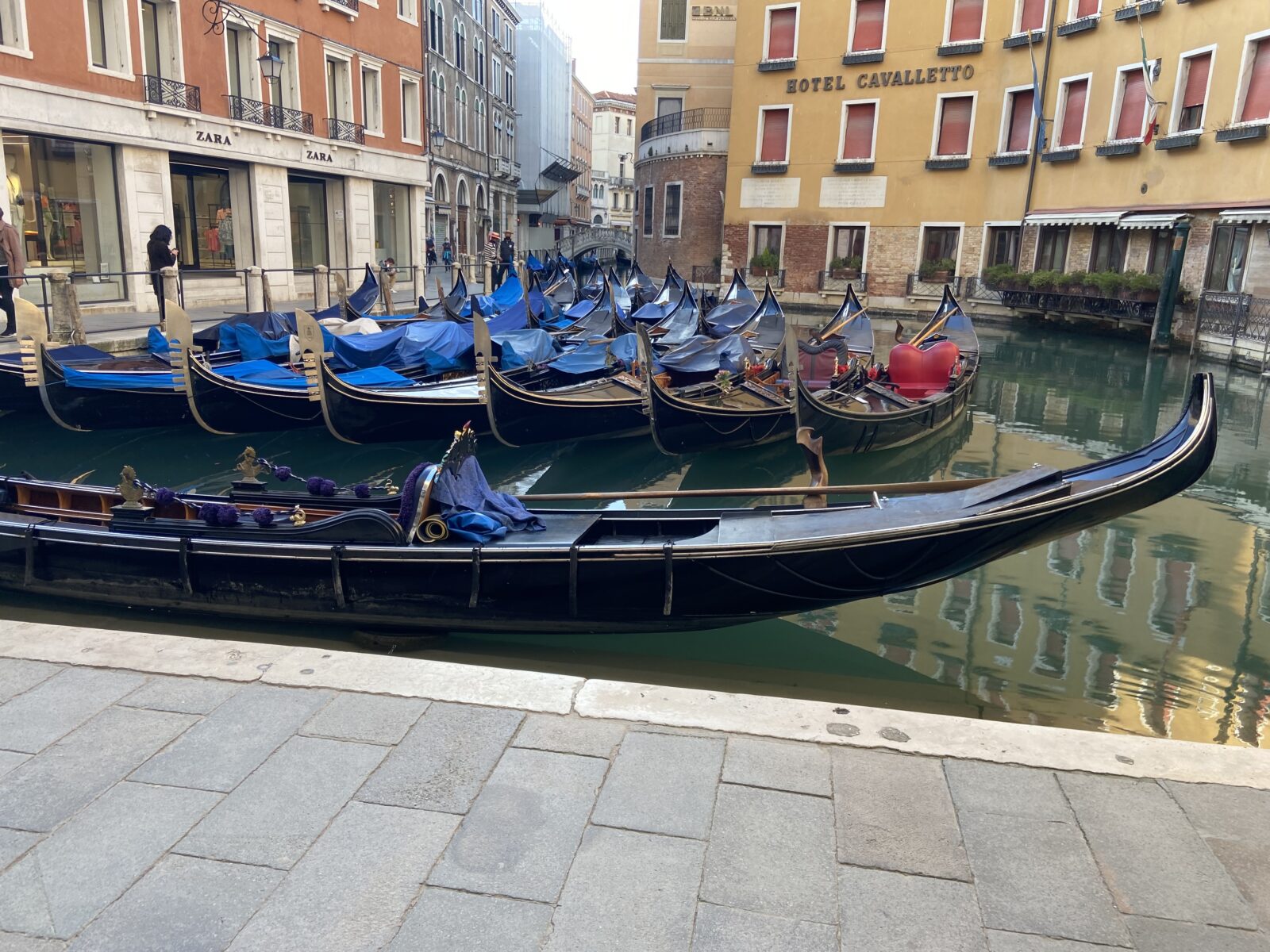
Then came the flood of Nov. 12, 2019 when the water rose more than six feet, killing two and causing hundreds of millions of euros in damage, including St. Mark’s Basilica which was flooded for only the sixth time in 1,200 years.
“Each TV in the world said there are problems in Venice,” said gondola pilot Luciano Pelliciolli. “They stay away. This is a city of 50,000. Without tourists, it dies. It’s a big, big problem.”
So desperate for business Sunday morning, Luciano gave us a discount on our first gondola ride which I will write about in my next blog. But suffice it to say that riding a gondola in a Venice depleted of tourism is like seeing Venice the way Marco Polo saw it. We even passed Marco’s old house.
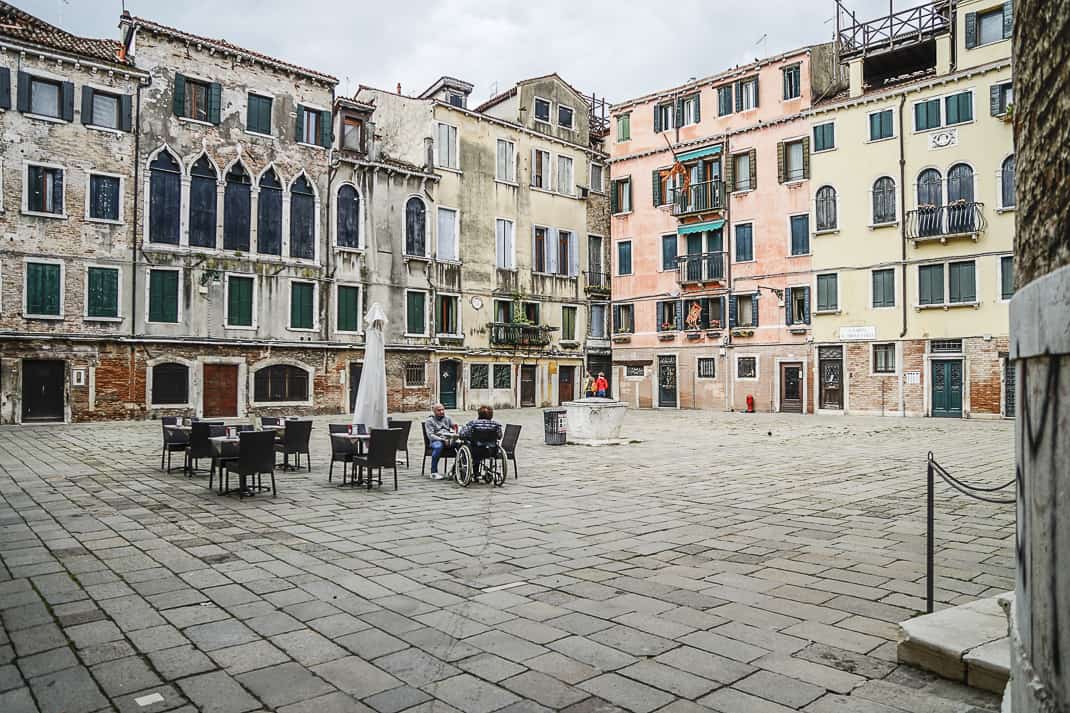
After a quiet, off-the-charts-romantic 45-minute cruise that was much more therapeutic than schlocky, Marina and I wandered through the back alleys of the Rialto neighborhood. Normally jammed with flesh, the area reminded me of some of the outer reaches of Venice where I’ve passed fishermen mending their nets and old women buying olive oil out of giant jugs.
Sprawling Campo Silvestro was empty sans for one couple sitting at the cafe’s outdoor table. Venice’s red and yellow flag fluttered on a tall building with flower beds. Bells pealed from the 9th century Chiesa di San Silvestro on the corner.
We worked our way back over the nearly empty Rialto Bridge and I took Marina back to Ai Mercanti. Simone, whose family has run the restaurant for 40 years, greeted us in the enclosed square of red brick. Venice, more known for its views than its food, surprised us. Ai Mercanti was one of many spectacular restaurants we tried. We started with an appetizer of marinated sardines in raspberry butter and whole grain bread. Then I had potato gnocchi with asparagus, crispy veal tendons and local Mittilla mussels that Forbes magazine last year named one of the 100 best Italian products.
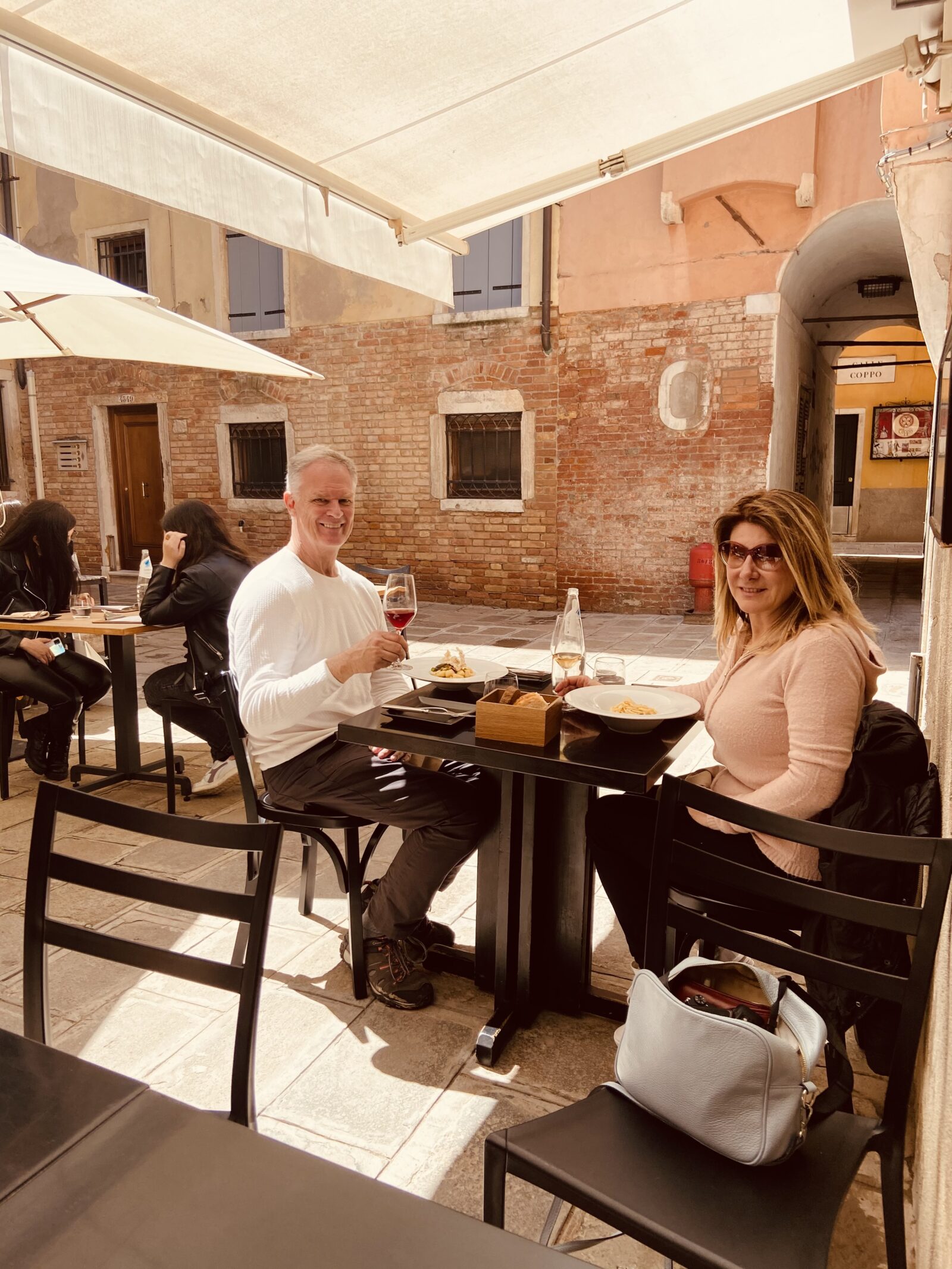
Simone was very grateful to be back at work for the first time since December.
“Maybe 10 percent of the businesses closed,” he said. “Ninety percent are surviving with a lot of difficulty. It’s a proper city now. (Before), it was like we opened our gates and closed them like Disneyland.”
I asked how he likes the Venice of this period as opposed to two years ago, despite the slow business.
“It’s real nice,” he said. “It’s nice to see Venice like this. You get quality tourism.”
All weekend we only saw one group of drunk youths who marched arm in arm singing a song neither of us could comprehend but at least when they climbed the Rialto Bridge they didn’t jump off it. Yes, it became such a problem here that last year the city fined two German tourists $790 each for swimming in the Grand Canal.

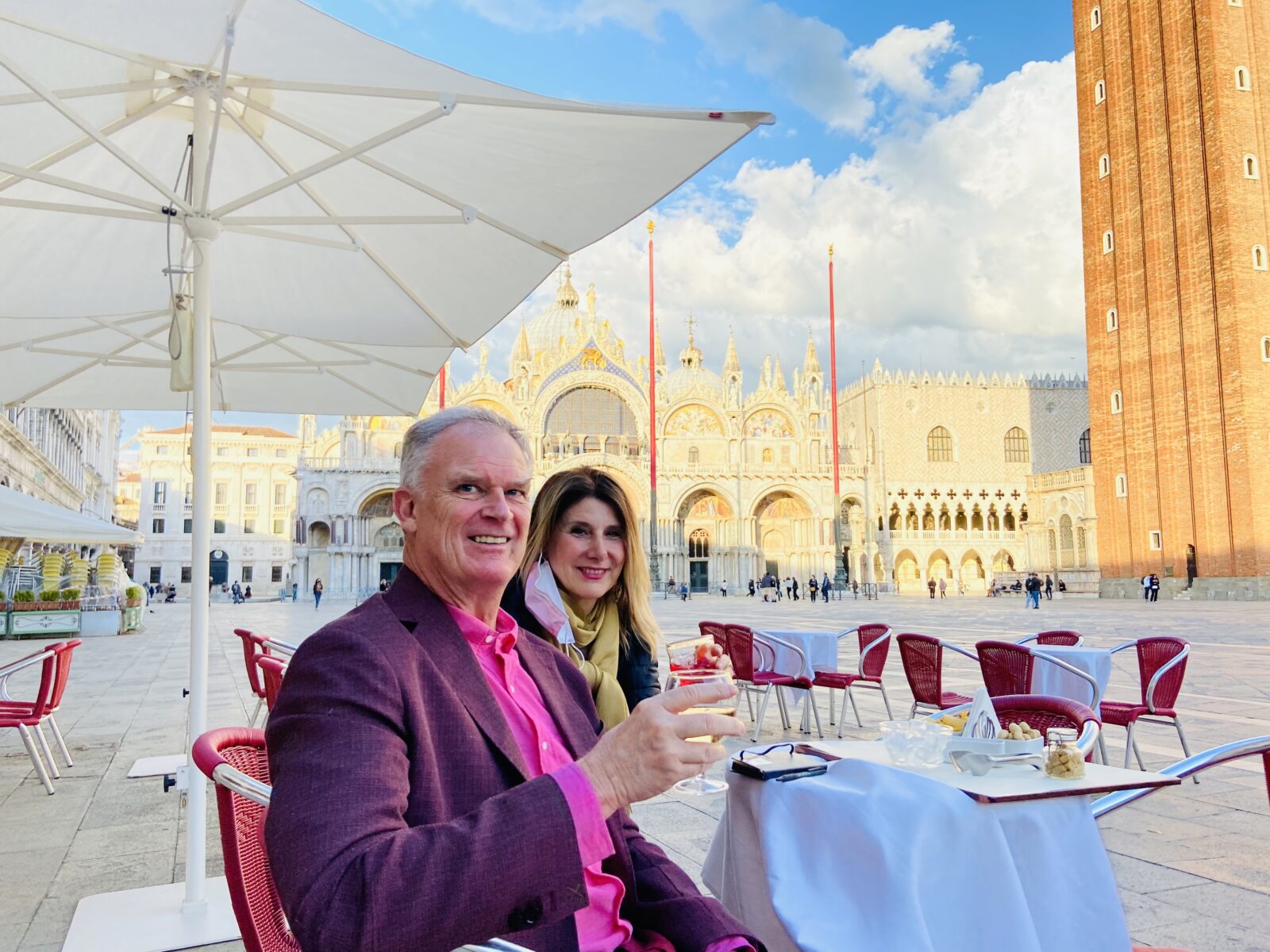
We remained classy. There’s no better way to feel upper class than a drink on St. Mark’s Square. On a sunny, crisp Sunday afternoon, we took a table at Gran Caffe Quadri. It has been a Venice institution since 1775 with waiters in white tuxedos slinging Spritz and tall glasses of Veneto wine to visitors from around the world.
We sat at a white tablecloth table and had a Spritz and a local Chardonnay while starving pigeons scurried for the bread crumbs we threw off our table. We were one of only two tables occupied. The afternoon was bleeding into evening and the blue, gold and red mosaics of St. Mark’s Basilica twinkled in the setting sun. When was the last time St. Mark’s Square and the Quadri were this empty?
Maybe 1775.
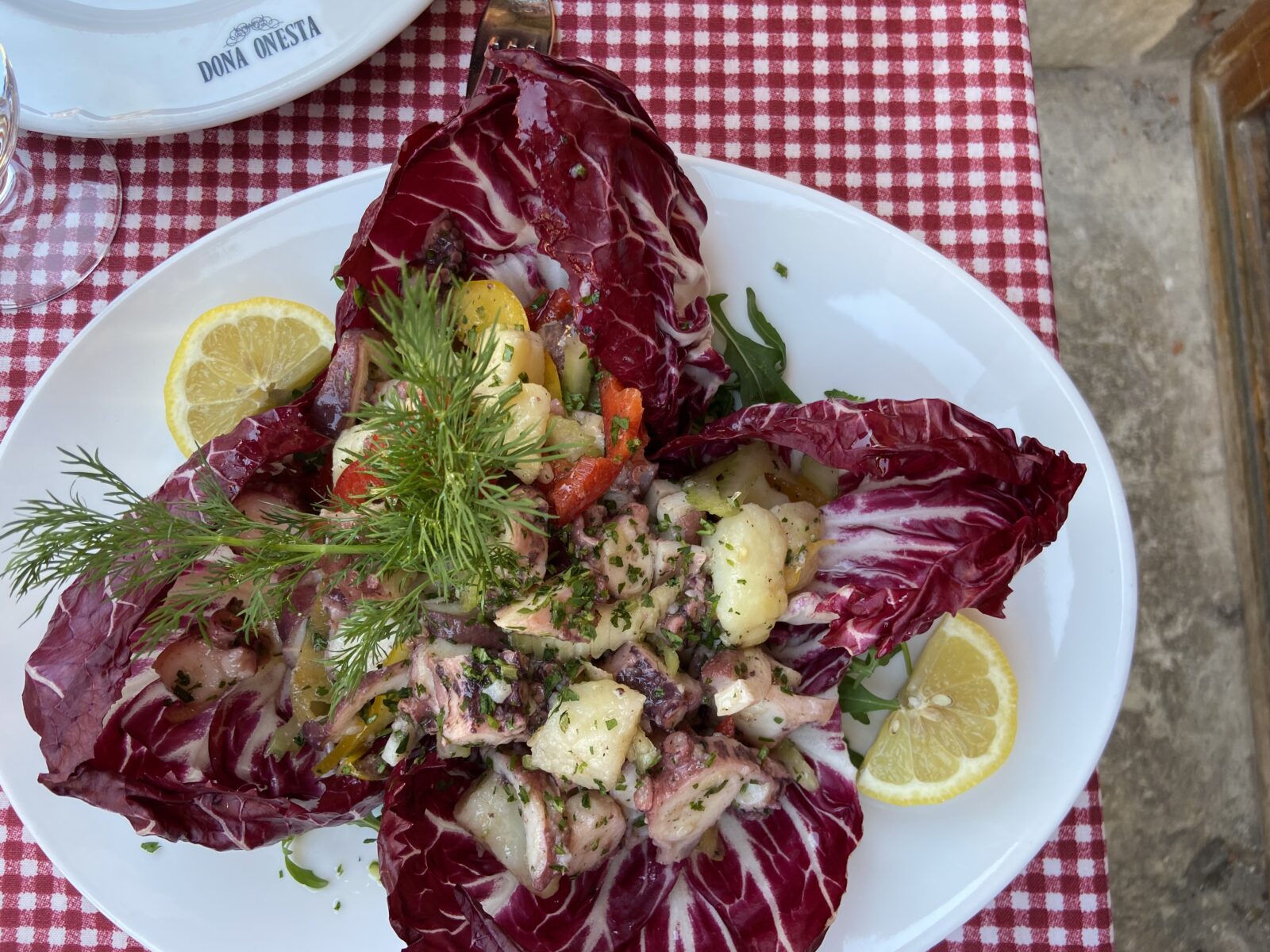
That night we dined at a quaint, little restaurant we stumbled upon the night before. Trattoria al Gazzettino was heavy on the freebies: fat, juicy sepia (cuttlefish, a Venetian specialty) chunks with a slight bite of piccante, grappa, grappa with chocolate and chocolate chip biscotti. My main dish of tube-like Gragnano pasta (made from durum wheat) with scallops and dried Sicilian tomatoes was one of the best meals I’ve had in Italy.
This was our second anniversary in Venice. It won’t be our last.
Deputy mayor describes plan
But what will Venice look like next time? I called one of the men responsible for steering one of the world’s great cities back to its old glamorous status. Simone Venturini is Venice’s deputy mayor for social welfare, tourism and economic development. I asked him how his office can help the city recover economically while holding tourism back from where it nearly destroyed the city before the pandemic.
“It’s a big challenge for us,” he said. “We want to restart not as before but better than before. We want to introduce new tools to govern the tourism phenomenon.”
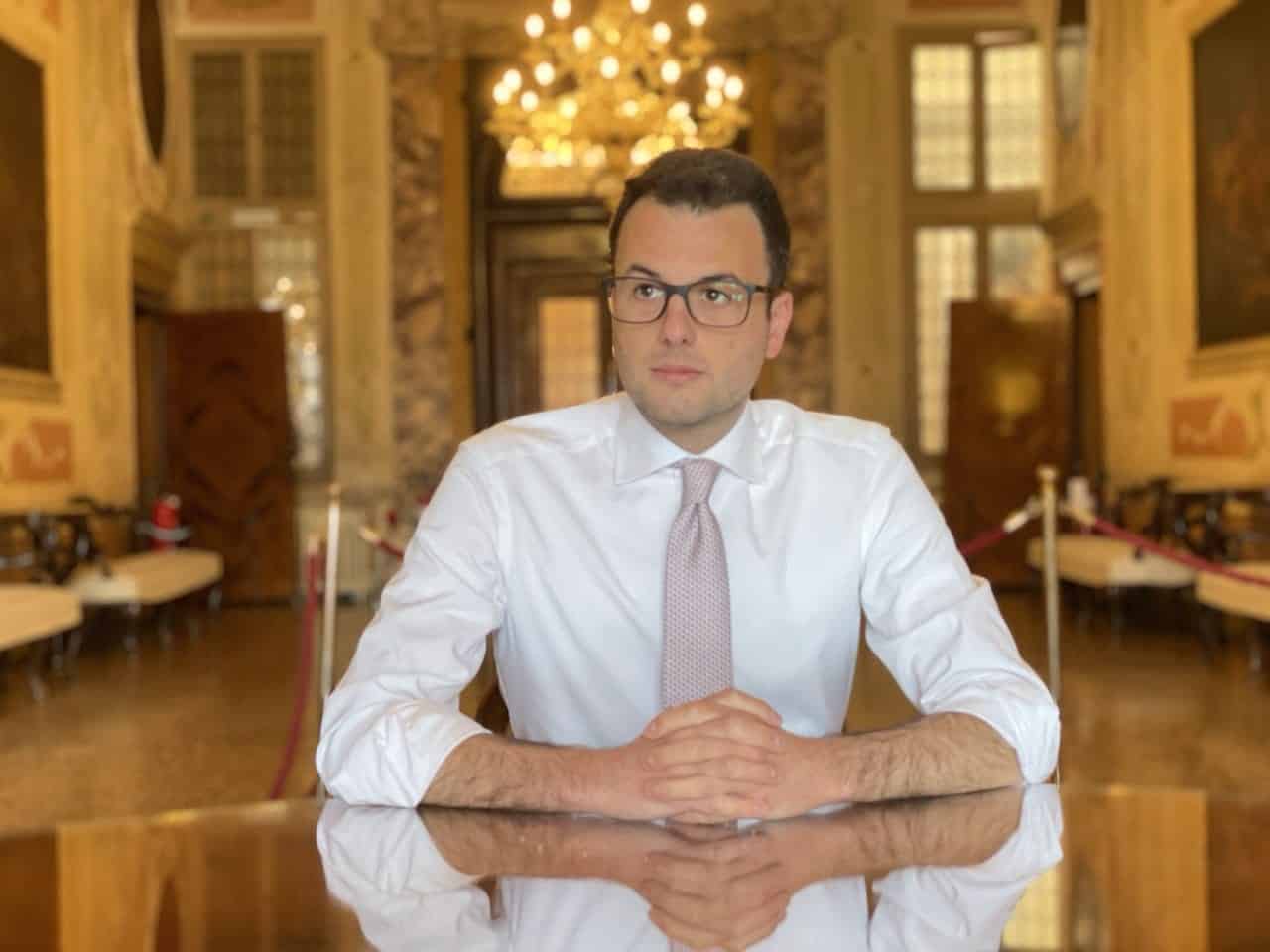
In promoting “quality tourism,” the city wants to charge day trippers, starting next year, between 3-10 euros for entering Venice.
“We’re telling the people if you arrive in Venice you must stay in Venice at least one, two, three nights to enjoy and understand Venice,” he said. “You can’t understand Venice if you only stay three hours. We need the type of tourism that wants to stay in Venice and bring the emotion that Venice can bring.”
That could severely restrict the influence of cruise ships. These monstrosities disgorge tens of thousands of people who flood the calli, eat a pizza, buy a gondola paperweight and leave. Meanwhile, the 96,000-ton ships pollute the Grand Canal to where it’s as dirty as the Tiber River.
“The city indicated a solution five years ago,” he said. “We say the cruise ships are welcome but outside San Marco Basin. We have to think and realize a different itinerary for the cruises that arrive in Venice. The city council proposed to do the same itinerary that the cargo ships do.”
The proposal is for cruise ships to arrive in Porto Marghera, a 20-minute drive over a bridge to the mainland, and stay there. However, the city has run into a brick wall in the form of the Italian government. Cities can’t rule on cruise ships but the national government can. Venice made the proposal in 2013.
It’s still waiting.
“The national government is lazy. It’s late,” he said. “It’s not interested in finding a solution.”
Venturini is from Marghera and Venice’s splendor has not worn off on him. His city hall is a big white building right on the Grand Canal. Even he must appreciate the tranquility that this post-lockdown, pre-tourism period has given us.
“It’s a very spring atmosphere, a new season,” he said. “We feel that the emergency is behind our back and we’re going into a new season: a season of hope, of rebirth. It was a very good atmosphere because people feel a very new coming, a new beginning.
“But in the lockdown, Venice was empty. There was a big silence around the city. Nobody worked. Nobody moved. It was a difficult period. I can understand that people say we got our city back. Yes, it’s true. But on the other side, we have no economy, no jobs, no euros, no nothing. People are desperate.”
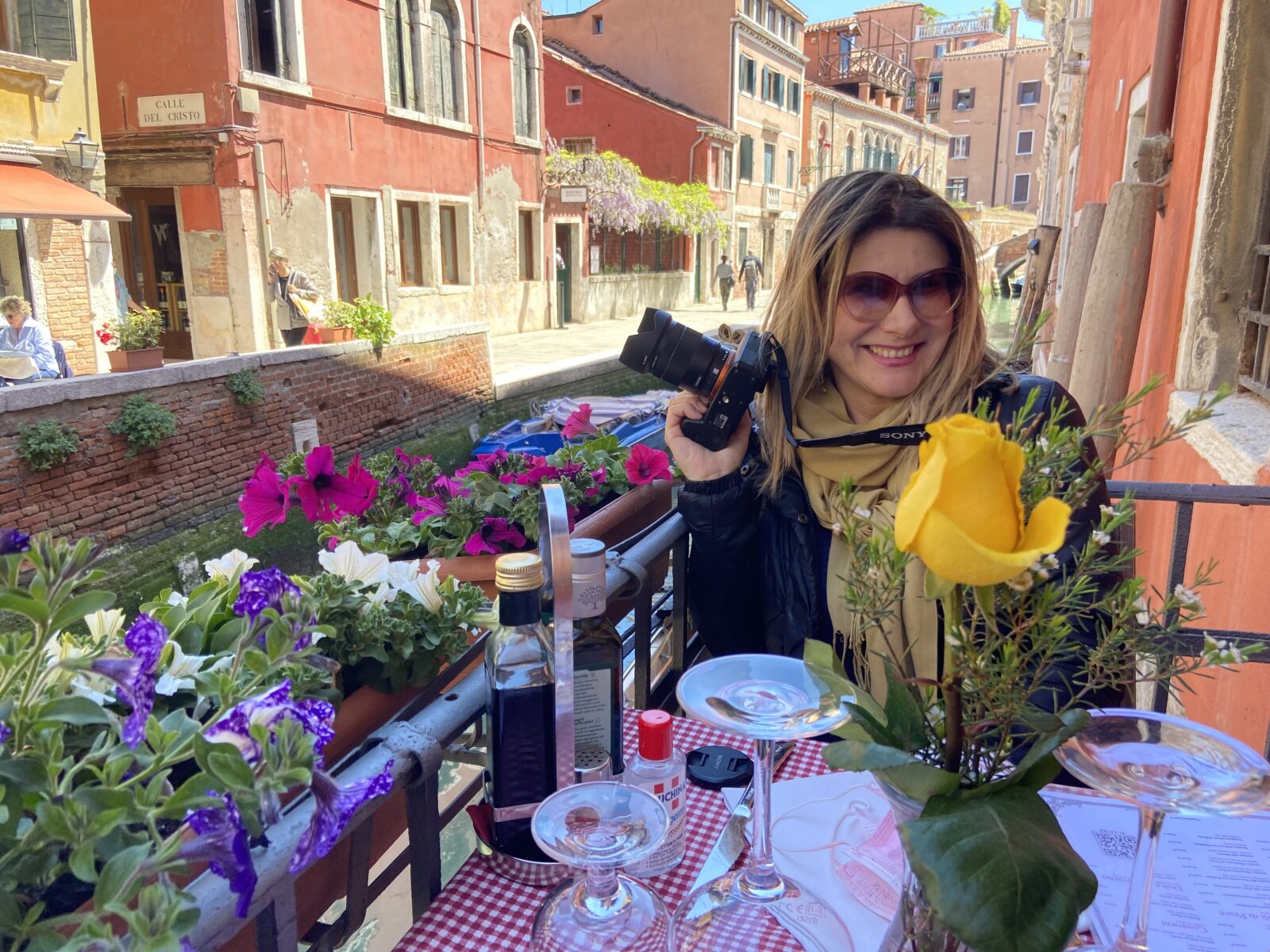
Marina and I did our best to help. On our way to the train station, we stopped at another beautiful little corner we discovered the day before in the San Polo neighborhood. Trattoria Dona Onesta occupies a corner of a tiny canal next to a bridge that frames four small tables lined with clay boxes of purple, pink and white flowers. A yellow flower adorned our petite table. A classic guitar played softly on the loudspeaker.
We had a huge, beautifully decorated octopus salad followed by salmon covered in a tomato sauce filled with local herbs and breadcrumbs. I think it was good. I don’t know. The romantic atmosphere was nearly overwhelming. So is post-lockdown Venice.
Ghe sbocio che bon!
If you want to go …
When to go: Due to Covid-19 restrictions, Italy is not allowing visitors from the U.S. except for essential reasons or to return home and must quarantine for 14 days upon arrival. Tourism is not allowed. However, new prime minister Mario Draghi said he may change restrictions sometime this month. The current working date of change is likely June 1.
How to get there: Italo (italotreno.it) has two trains a day from Rome lasting four hours for 69 euros if bought at least a week in advance. Prices are higher if purchased sooner. Trenitalia (lefrecce.it) has several a day ranging from 24.25 euros for eight hours to 77.90 euros for four hours.
Where to stay: Hotel Antico Panada. Calle degli Specchieri 646, 39-041-520-9088, www.hotelpanada.com, info@hotelpanada.com. Only about 50 feet from St. Mark’s Square, the three-star Panada has elaborately furnished rooms and a fine buffet breakfast included. I paid a little more than 100 euros a night.
Where to eat (Hours may change due to Covid restrictions): Trattoria Dona Onesta, Dorsoduro 3922, 39-041-71-0586, Website: Home | Trattoria Dona Onesta (wixsite.com), donaonestavenice@gmail.com , Daily noon-10 p.m. Romantic spot above a quiet canal with many seafood choices.
Ai Mercanti, AI Calle Dei Fuseri, 39-041-523-8269, www.aimercanti.it, info_aimercanti@libero.it, 12:30-3 p.m. and 7-10:30 p.m. In a small enclosed square near St. Mark’s Square with homemade dishes using primarily local ingredients and produce.
Trattoria al Gazzettino, Sottoportego delle Acque 4997, 39-041-521-0497, www.algazzettino.it, info@algazzettino.it, 12-4 p.m. and 6-10 p.m. On a quiet alley between St. Mark’s Square and the Rialto Bridge, Gazzettino serves interesting twists on classic Italian pasta dishes and they throw in some treats on the house.
For more information: Venezia Unica, 39-041-2424, www.veneziaunica.it.


May 5, 2021 @ 9:22 am
Fantastic write up John! And a very Happy Anniversary to you and Marina….the picture of the two of you at the table in front of the Basilica is just spectacular! Congratulations! My first trip there with my German coach and soccer team in 1985 as a 14 year old left a remarkable impression and love of Venice ever since- despite a kamikaze pigeon shitting on my shoulder! Being able to take my wife and kid there in 2009 was great.
Thank you for sharing!
May 5, 2021 @ 12:58 pm
Good Article!
I think it may be useful to add some information
The city of Venice does not have 52,000 inhabitants. That number is relative to the inhabitants of the islands. Venice also has mainland districts. In total, the inhabitants of Venice are about 255,000. The main economic activity on the islands is tourism. But on the mainland near Venice there is the industrial complex of Marghera with chemical, metallurgical and energy industries. Shipyards and logistic services.
Why have so many inhabitants left the islands?
Partially this is caused by the difficulty of living in Venice. Old houses are difficult to maintain and very expensive.
In the last 20/25 years, the phenomenon of so called “overtourism” has caused the increase in rents, forcing many residents to move.
This decrease in residents has been favored by local authorities who have slowly moved to the mainland or canceled services for the island’s people.
If you are not employed in the tourism activities, living in Venice is very difficult. Many tourism workers in Venice also do not live on the islands because they cannot afford rents.
In recent years, UNESCO has threatened to put the city on a list of “world heritage sites in danger.
UNESCO claims: “The exceptionally high tourism pressure on the city of Venice has resulted in a partial functional transformation in Venice and the historic centres of the Lagoon. This includes functional transformations of Venice and the lagoon historic centers caused by the replacement of residents’ houses with accommodation and commercial activities and services to the residence with tourism-related activities that endanger the identity and the cultural and social integrity of the property.
These factors may in the future have a serious negative impact on the identity and integrity of the property and are consequently the major priorities within the Management Plan”
The citizens of the islands are not happy. But They are a minority. The majority of citizens who live in the mainland are not interested in the islands condition because they work for tourists (but do not live in the islands) or work in other sectors. In the last elections the mayor who maintained the policies that cause depopulation (like the mayors of the last 20 years) won thanks to the votes of the citizens who live on the mainland. The majority of the citizens of the islands voted against him. But now they are few to change things …
May 6, 2021 @ 5:12 am
Thanks, Giuseppe. I know a lot about the depopulation of the city. I wrote about it three years ago when we went on our previous anniversary: https://johnhendersontravel.com/anniversary-in-venice-a-beautiful-city-in-turmoil/. I did not know that UNESCO is about to put it on the endangered list. That’s interesting. I’ve seen Venice’s population listed at 250,000 and up but no one uses that figure. It’s like people saying there are 5 million people in Rome. The figure is 2.8. The rest are in the suburbs. They don’t count and, just for context, I wouldn’t count the mainland as part of the Venice everyone knows. Do you live there?
John
May 6, 2021 @ 3:33 pm
Hi John,
I don’t live in Venice. I’m just interested about historic centers. I love Rome so I like articles about “La Capitale”.
On the other hand I read your article on Venice and I think it is very accurate and informative.
The situation between Unesco and Venice it’s interesting. In the last years there are some Unesco’s report related to the problem of overtourism in Venice. There a list of reports about it (2013,2015,2020).
The last report outcome was controversial and surprising. After the visit of Unesco inspector,
local authorities showed a long list of activities to combat overtourism and they said that the Unesco’s inspectors were satisfied. At the same time, some citizens’ associations and environmental organizations protested against the inspectors for not listening to them.
In any case the 2020 report (Unesco/Icomos/Ramsar – ‘Venice And its Lagoon’) contains strong critics about the local (and central government) behaviours.
Two examples:
The Mission considers that the number of tourists in Venice largely exceeds the carrying capacity of the city as a living urban organism, be it in terms of the built structure or of the socio-economic consequence, and the World Heritage property in general. The mass tourism in Venice and its Lagoon, has a highly negative impact on ‘Outstanding Universal Value’ of the property and the attributes that convey the OUV. It has a destructive impact on the historic urban fabrics, on the environment of the Lagoon, and on social and cultural identities of its residents. It also makes the economy of the region unbalanced and vulnerable.
Summarising the situation related to tourism management in the property, the Mission considers that the State Party did not comply with the request of the World Heritage Committee to develop a sustainable tourism strategy. Despite of progress made in enhancing the tourism management tools for Venice and the Lagoon region, the present situation does not yet represent an approach, which is based on dialogue and stakeholder cooperation where planning for tourism and heritage management is integrated in an adequate level, the natural and cultural assets are valued and protected, and an appropriate long-term strategy for tourism developed.
May 10, 2021 @ 3:40 pm
Ciao John,
I just love your writing! And the photos are wonderful too.
Thank you for transporting us there and for your great journalism skills that you bring into your posts.